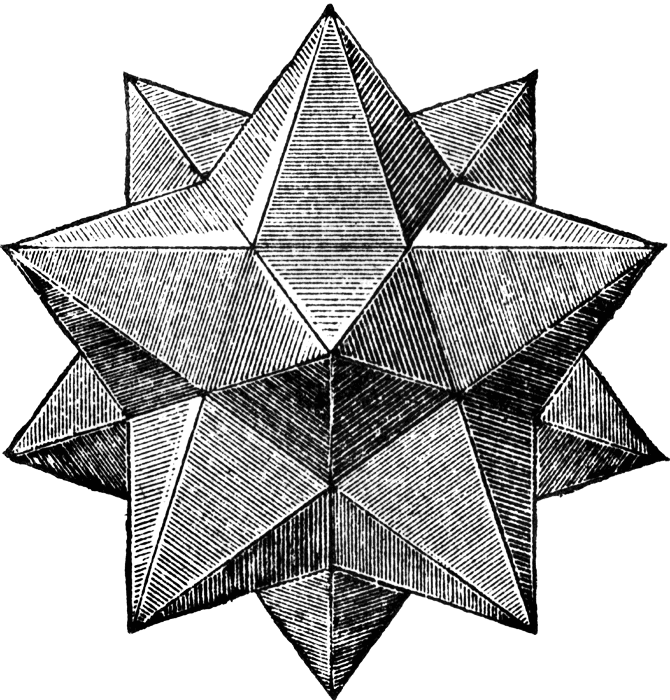|
|
LITR 5439 Literary & Historical Utopias
|
|
Daniel B. Stuart
Tolstoyism and the Tolstoyan Movement: Literary Man and Real Utopia
Utopian thought was very much alive in the nineteenth century, perhaps
more so than many other periods. The social conditions of the period combined
with shifting political ideologies and more pervasive literacy gave rise to an
even more fervent push towards the idea of social equality and univeral
prosperity than had previously been introduced a century before during the Age
of Revolution. Now there were practical measures which could be taken to ensure
the common good; or, failing that, at least strive for a more perfect order.
Such ideas and inspirations were not limited to more cosmopolitan, westernized
countries. Indeed, one of the most prominent and singularly fascinating examples
of utopian civilization arose in Russia, a country still feeling its way after
the liberation of the serf population by the czar in 1861. Still more so, it was
a country not considered—at least by its more progressive European neighbors—to
be fitted for full-fledged democracy, much less any type of idealized community
where the common good could be realized and a utopian reality could flourish.
Much of the vast swaths of the country lay uninhabited and even more regions
still operated under a feudal system not much different from the one existing in
western Europe half a century before. Such was the case, however, in the very
last decades of the nineteenth and the first few years of the twentieth when
such communities did find their place in Russia, in Europe and indeed all over
the world. Uncommon for a utopia, this phenomenon was largely owing to the
efforts of one man. Even more uncommon, this man was one of the most famous (if
not the most famous) fiction authors of the time, already having
well-established himself as a legendary novelist and master of narrative prose.
The man was of course Leo Tolstoy and his Tolstoyan movement at the turn of the
century was as enlightening and purposeful an undertaking as his novel writing
had been. The movement, much of it centered on his very own personal beliefs and
convictions, roused thousands throughout his native land and even extended
beyond those borders to the farthest regions of the world, inspiring some of the
most pivotal figures of the twentieth century.
The completion and publication of his novel Anna Karenina in 1877
held conflicting circumstances for the 50-year-old Tolstoy. The novel was an
immediate and enormous success, validating its author as one of the premier
writers and intellectuals of the time. The work was and remains as important as
his foremost accomplishment of War and Peace, sustaining the already
generous celebrity of its creator. Personally, however, this period of the
writer's life was problematic. Despite wealth, fame, dignity and a large and
loving family, the man Tolstoy was a miserable shell of his former self. A
member of the original aristocracy and entitled to all the spoils of the landed
gentry, he had lived the first half of his life as many a red-blooded man would,
pursuing glory and pleasure, enjoying riches and luxury until ultimately
settling down with the love of his life—wife Sofya who would bear him 13
children. Now a severely debilitating emotional and spiritual depression had
taken over him; today we might call it a midlife crisis. Weighted down by what
he referred to as the "curse of privilege" and burdened by the incredible
poverty and suffering he witnessed around him, he began a new sort of
intellectual and literary endeavor.
Like many a soul-searcher before and after him, he turned to established
religion only to be turned off by what he perceived as Russian orthodoxy's
shallow doctrine and empty substance, an institution which masqueraded as a
spiritual entity but only served the will of itself and the state. With vigour,
he re-acquainted himself with the scriptures, paying close attention to the
Sermon on the Mount, and perused the writings of hundreds of religious thinkers
in an effort to pursue the truth and validate his thesis that the Kingdom of God
was in the heart of every man. In his subsequent tracts A Confession, What I
Believe, An Examination of Dogmatic Theology, Tolstoy set down what he felt
to be the vital pattern for a life well-lived both independently and within a
shared community. Outlining five Biblical commandments which he felt to be of
the utmost importance, he set down in brief form his guidelines for ideal
living. In short they were: do not be angry; do not lust; do not take oaths; do
not return evil for evil; and, love all men. Though rather informally
articulated, these noble truths of Tolstoy's newfound faith would shape the
utopian communities later formed under his guidance which abided by rather
strict conventions of temperance, chastity, equality and pacifism (Tolstoy,
Collection).
Such formalized communities would come later, however, as Tolstoy's next
step was to enact his own personal ambitions within what he saw was an unjust
world. In fact, his own spiritual convictions would have to be curtailed by what
he saw as the evil of money. Having the means to at least counteract some of the
reprehensible destitution he saw for himself in the streets of Moscow and in the
famines of the steppe region, he embarked on charitable excursions, funding
humanitarian missions and facilitating social services for the largely peasant
population (Bunin, 34). This too, however, he ultimately felt to be a dead end.
Philanthropy, it seemed, was almost an evil in itself owing to the simple fact
that it merely reinforced the concept of man's dependence on money. In his tract
What Then Must We Do?, Tolstoy outlined his own proclamations on how
disparity of wealth morally and ethically impoverished both the rich and the
poor. "No one possesses any rights or privileges . . . but only endless duties
and obligations, [the first being] to participate in the struggle with nature in
order to support his own life and that of others" (Tolstoy, Collections).
Tolstoy, in fact, never formally advocated any intentional communities
based on his teachings. Much like the great men of the reformation and other
subsequent Christian leaders, his following merely grew out of a shared desire
in others to see life the way he did. This phenomenon took a little while. His
tracts were banned from publication in Russia and many of his works had to be
smuggled back into the country after proliferating abroad in places like France
and Germany. Tolstoy himself was actually excommunicated from the Russian
Orthodox church and ostracized by many of the state's authoritarian regimes. But
the country's lay people, its middle class as well as its peasantry and even
some among its aristocracy eventually embraced the new teachings of their native
author and thus the Tolstoyan Movement, or "Tolstoyism," was born. Independent
communities began flourishing in and outside of Russia, one even just down the
road from Yasnaya Polnaya, the Tolstoy family estate (Bunin, 43).
Much like a commune or integrated society of other generations, Tolstoyan
communities identified themselves as Christians separate from traditional
institutions. Absent from the dogma surrounding their religious principles were
many of the mystical aspects of divinity, adherers to the movement preferring to
abide by the more practical measures laid down in the scriptures, particularly
in the Sermon on the Mount (Summins, 65). Tolstoyans lived simple, ascetic lives
of an agrarian nature. Though no particularly restrictive measures were
enforced, the mutual practices of chastity, non-smoking, unadorned dress and
nonviolence were upheld. Of particular importance was the latter as pacifism was
a rigid staple of the movement as well as the non-participation in any state
institution as government was seen to exist only on the basis of coercive force
and exploitation of the masses. Of course, no Tolstoyan community would be
complete without the dissolution of private wealth which, though not totally
outlawed, was largely discouraged among members (Tolstoy himself was still a
landowner until his death) (Summins, 68).
Outside of Russia, Tolstoyan communities flourished all over Europe,
particularly after the death of Tolstoy himself in 1910, much owing to the
furthering of his ideas by his compatriot and personal confidant Valery
Chertkov. In Africa, a Tolstoyan community was established by none other than
Mohandas K. Gandhi in Johannesburg in the early part of the 1910s and in
America, Ernest Howard Crosby introduced the same ideas to his Christian
Commonwealth Colony in Georgia. The movement flourished most poignantly in the
years between the author's death and 1917 when the Bolsheviks came to power,
even continuing to gain new membership in the years immediately after the
Revolutions. And though they were successively destabilized or wiped out
entirely following the fall of the czarist regime, many communities outside of
Russian still maintained adherence to the Tolstoyan principles (Collection,
Tolstoy).
Today, though few official communities claim the name of Tolstoyan, many
still abide by the movement's chief principles of nonviolent resistance to civil
government, pacifism in the matter of warfare and conflict, abolition of private
wealth and ownership and social equality, this despite allegations—since the
time of the movement's inception—of anarchy and support for civil unrest. The
Doukhobors, a spinoff of the Tolstoyans largely dislocated from Russia in the
1930's, still read the published tracts of the author's teachings, and several
of the group's members have even relocated back to Russia (Summins, 88). Upon
his death at 82 amid a cloud of scandal, celebrity and eccentricity, Tolstoy
never completely endorsed the movement but only that each person pursue the same
path he had toward his own spiritual truth. It was an advocacy that was not
without conflict and discord, even among his own family, even within himself.
But as a socialist movement of the first order, the Tolstoyan concept must be
recognized as among the foremost utopian efforts of recent history.
Works Cited
Bunin, Ivan. The Liberation of Tolstoy. Evanston: Northwestern University
Press, 1937.
Collection of Works on the Tolstoyan Movement (http://archive.org/search.php?query=subject%3A%22Tolstoyan%20movement%22&sort=downloads)
Simmons, Ernest J. Introduction to Tolstoy's Writings. Chicago: University of
Chicago Press, 1968.




